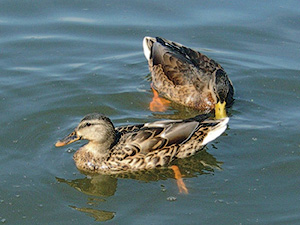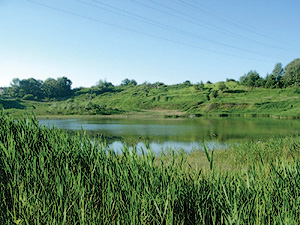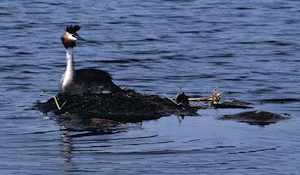|
|
|
In term of nature, the rivers, river valleys and other bodies of water are among the most interesting places in Krakow. Many rare plants and animals occur there. Equally interesting are wetlands, situated mainly in river valleys and very close to ponds. Some valuable habitats can be found there, such as reed fens, sedge communities, wet meadows, and carrs.

|
|
phot. Kazimierz Walasz
|
1. Functions of wetlands
The core of the river system in Krakow is the Vistula and its major tributaries: Rudawa, Białucha (Prądnik), Dłubnia, the Kościelnicki stream, and Wilga. These rivers host interesting plant communities. Particularly noteworthy is the Vistula river valley, along which one can visit well-preserved wet meadows, e.g. those in Kostrze, or the meadows complex called Łąki Nowohuckie.
Carrs are another valuable habitat type. The best preserved fragment of carr vegetation is situated between Przegorzały locality and Salvator hill. Some other woods, such as the one in Łęg and the Mogilski wood are also of a carr type.
When visiting the Vistula river valley, one notes also the fragments of the old river bed where the main current once flowed. The most valuable among them are the old river bed sections at Koło Tynieckie and another one near the the Przewóz barrage (see phot.).
The best preserved fragment of a river valley is the one of the Białucha (Prądnik) river in the northern part of Krakow (see phot.). This section has never been subject to regulation, and has retained its natural meandering course till today.
Rivers perform, above all, the function of ecological corridors along which birds migrate. They also provide wintering sites. The section of the Vistula near the Wawel Castle hill provides the largest wintering site for mute swan in the south of Poland.
Bodies of water offer breeding sites for water birds, as well as wintering sites and rest places during migrations. The largest bodies of water, on which the greatest number of bird species congregate are: the Bagry lagoon, Płaszowski Pond, bodies of water in Zesławice, gravel pits in Przylasek Rusiecki and Brzegi, and an reservoir and ponds in Mydlniki.

|
|
Bonarka nature reserve;
phot. Kazimierz Walasz
|
2. Interesting species
Among the most interesting species of water birds are: great crested grebe, little grebe, little bittern, coot, moorhen, tufted duck, common pochard, common redshank, and kingfisher. Gulls including black-headed, common, and herring gull have their wintering sites there, while geese and divers stop en-route on their migration.

|
|
Great crested grebe (Płaszowski Pond);
phot. Aleksandra Pępkowska
|
A rich variety of plant and animal wildlife can be admired in wet meadows. The plant species worthy of note include: Siberian iris (see phot.), meadow gladiolus (see phot.), marsh gentian (see phot.), lilac pink (see phot.), and orchids. Among butterflies, the most valuable and rare species are: scarce large blue (see phot.), dusky large blue and alcon blue, violet copper (see phot.), English large copper and swallowtail. There are also rare bird species occurring, e.g.: common quail, corn crake, red-backed shrike, common nightingale and thrush nightingale.
In the woods of the river valley, one can observe the long-eared owl, green woodpecker, Syrian woodpecker, and penduline tit.
The wetlands are also sites where amphibians can dwell. Among the amphibians occurring there, the following are worthy of note: moor frog, green toad, tree frog, common spadefoot, and common newt. It is also the place where grass snake can be found, the only aquatic reptile living within the limits of Kraków.
3. Threats and protection
To preserve aquatic and wetland habitats is one of the key issues for nature conservation in Krakow. These areas are indeed the most susceptible to the impact of humans. The authors of The spatial planning study for Kraków city proposed creating a system of green areas and riverine parks which would guarantee that in these places nature is retained unaltered for the residents to enjoy.
The key issue in the protection of the river valley is to retain the natural course of the river concerned. Regrettably, the beds of rivers flowing now through Kraków have already been considerably regulated. Also important is keeping waters at a suitable level of purity. In order to protect wet meadows and carrs, maintaining the right level of underground water in the areas they occur is of the utmost importance. Residential developments in the surrounding sites are a prime cause of drying in these areas. In the case of meadows it is also necessary to continue their use (ether cutting or grazing).
Written by : Joanna Kudłek, Aleksandra Pępkowska, Kazimierz Walasz and January Weiner
|

